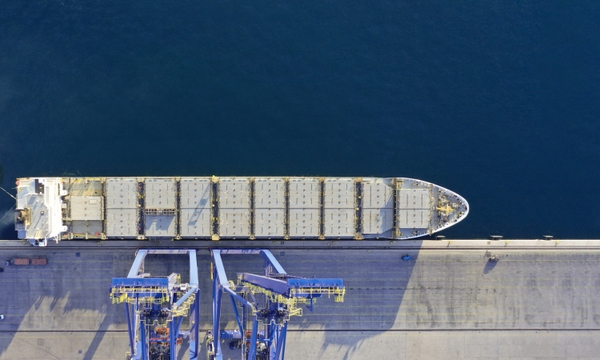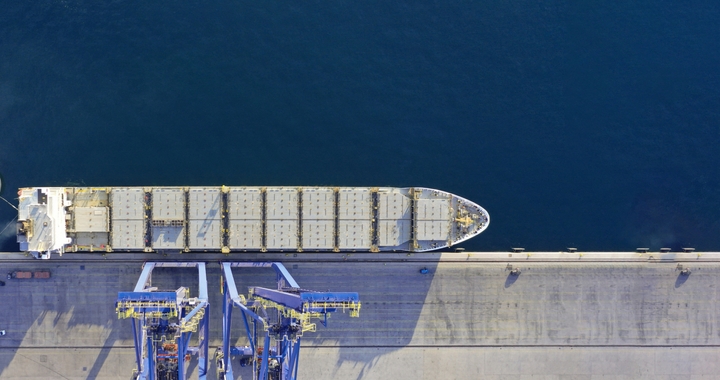Deadweight Tonnage

The shipping industry is wrought with different terms that can be unfamiliar for first-time shippers. Examples of these are deadweight tonnage, gross tonnage, net tonnage, and displacement tonnage. While they all refer to volume, there are important differences between them that shippers should be aware of.
In this article, we zero in on deadweight tonnage and discuss what it is in the shipping industry and how it’s different from other tonnage-related terms.

What is Deadweight Tonnage?
Deadweight tonnage, or DWT, is the total weight that a ship can carry. This not only includes the weight of cargo but should also take into account the sum of the weights of fuel, freshwater, provision, ballast water, crew, and passengers. Note that boiler water is not included in the computation for deadweight tonnage.
Deadweight tonnage does not, however, include the weight of the ship itself when it is totally empty. As such, when submerged, the ship’s deadweight tonnage is the displacement by the vessel “light” minus the displacement when submerged. Load line refers to the maximum depth the vessel can be immersed in when loaded with cargo.
Deadweight Tonnage vs. Gross Tonnage vs. Net Tonnage vs. Displacement Tonnage
Shipping DWT should not be confused with gross tonnage, net tonnage, or displacement tonnage. To help you distinguish between them, here are their differences.
Deadweight Tonnage
As mentioned, deadweight tonnage or DWT weight refers to the carrying capacity of a ship, not including the ship’s weight when empty but accounting for the weight of cargo, fuel, water, provisions, crew, and passengers.
Deadweight tonnage is different from the others in the following manners:
- Deadweight Tonnage vs. Displacement Tonnage: Displacement tonnage includes the ship’s own weight while deadweight tonnage does not.
- Deadweight Tonnage vs. Gross Tonnage: Gross tonnage only refers to the internal volume of the ship while deadweight tonnage refers to its carrying capacity.
- Deadweight Tonnage vs. Net Tonnage: Net tonnage only refers to usable space, while deadweight tonnage refers to carrying capacity.
Gross Tonnage
Gross tonnage, on the other hand, refers to the measure of the ship’s internal volume. It only applies to the vessel itself and does not consider the cargo. Keep in mind that gross tonnage measures volume and not weight. Hence, it is computed by dividing the contents of the vessel’s enclosed spaces in cubic feet by 100.
Gross tonnage involves two variables: V and K. V refers to the ship's total volume in cubic meters, and K is the multiplier based on the ship’s volume.
Gross tonnage, along with the next measurement we will discuss below, net tonnage, were both curated by the IMO International Convention on Tonnage Measurement of Ships in an effort to create a standardized universal tonnage measurement system.
Before the development of gross and net tonnage measurements, ships were following gross register tons and net register tons, which had significant differences. Gross and net tonnage were adopted in 1969, set forth in 1982, and recognized as globally accepted systems.
Only on July 18, 1982, when these standard measurements were enforced, they started applying to the logistics industry.
Hence, only ships built on or after this date follow gross and net tonnage rules.
Net Tonnage
Most novice shippers often mistake net tonnage as one and the same as gross tonnage. However, the two are completely different. Net tonnage does take gross tonnage into account but subtracts from it the space occupied by the crew, machinery, engine room, and fuel.
Hence, net tonnage refers to the available space in the ship after all the essentials are factored in. It thus reflects the remaining space available to accommodate passengers and cargo.
Gross tonnage and net tonnage are similar in one aspect, however. This is because they are both dimensionless, and as such, units of measurement cannot be used to describe them. It would be incorrect to use the word “tons” as a physical unit of measurement for the gross tonnage and net tonnage.
Displacement Tonnage
Another thing that is being measured is the ship’s displacement, which measures the volume of water displaced when the ship is floating. This is measured in cubic meters.
Displacement tonnage, however, is also measured when the fuel tank is full and all stores are onboard. In this case, the water volume when the ship is floating is measured in metric tons.
Another way displacement tonnage is used to describe the weight of the vessel, along with its contents, in tons of 2,240 pounds. When the contents are not included in the computation, the displacement is referred to as “light.” On the other hand, when the calculation includes the cargo, bunker fuel, and stores, the displacement is called “loaded.”
Why is Tonnage Measurement Important?
While deadweight tonnage and the other measurements are not typically used in everyday shipping, they are important bases for logistics authorities as they make regulations for registration fees.
Gross tonnage and net tonnage are also used to calculate port dues, making it important for businesses to precisely compute their shipping expenses.
Tonnage measurement is used to assess the following dues:
- Canal dues (based on net tonnage)
- Harbor dues (based on either gross tonnage or net tonnage)
- Light dues (based on net tonnage)
- Pilotage dues (based on either gross tonnage or net tonnage)
Other than as a basis for dues, tonnage measurements can also be used to compare ship sizes. This is because, as established, ships can be larger at first glance but have a smaller gross tonnage or usable space than a smaller ship.
For example, the largest container ship in the world has 230,000 gross tonnages, while the largest cruise ship has 228,00. Hence, there is more usable space in a container ship than in a cruise ship.
Tonnage measurements play an important role in the shipping industry. The more you know about it, the better you can optimize your business’ shipping efforts and make the best decisions.


